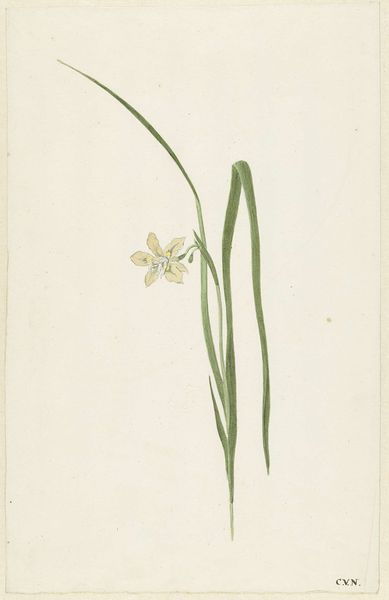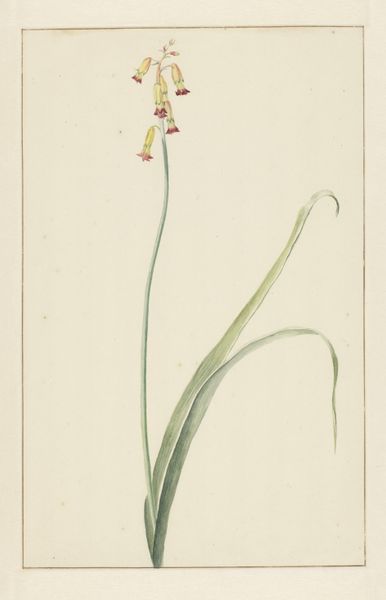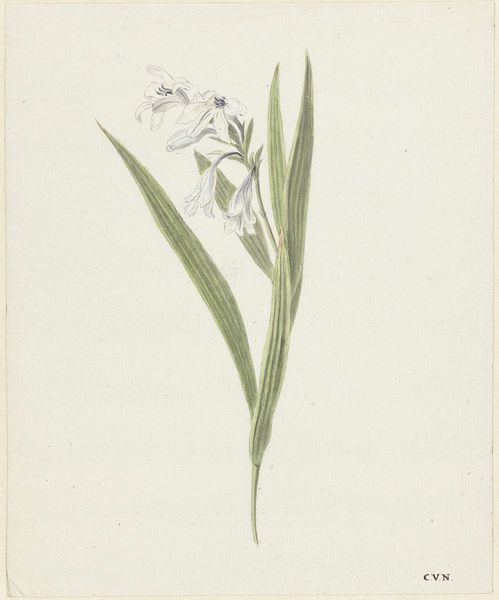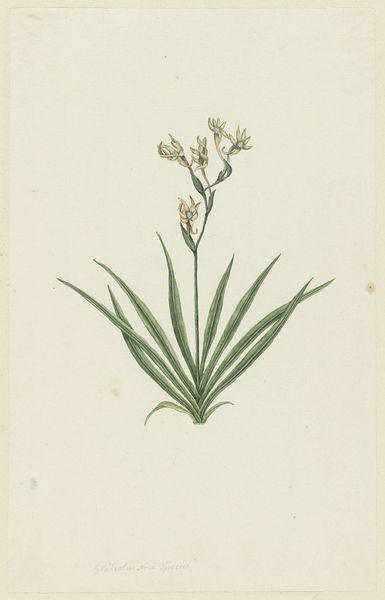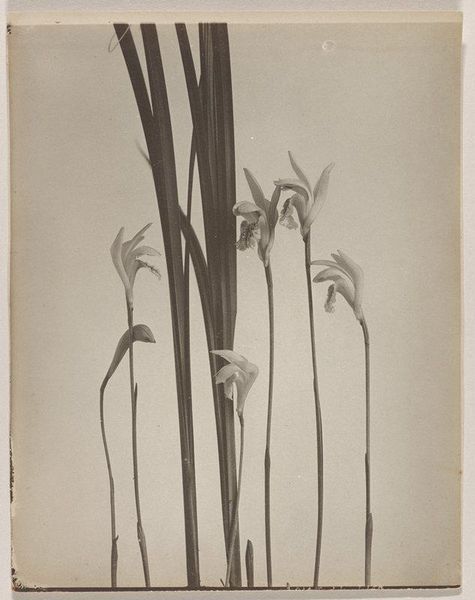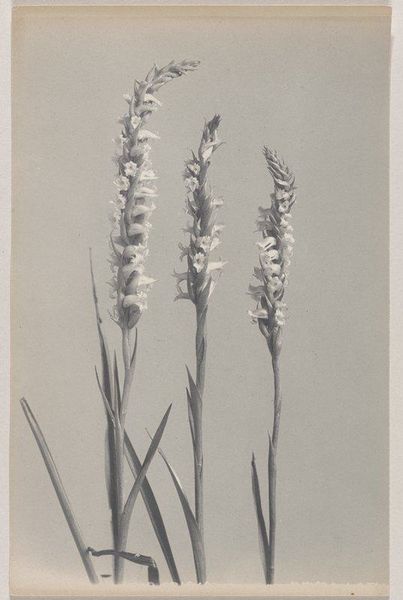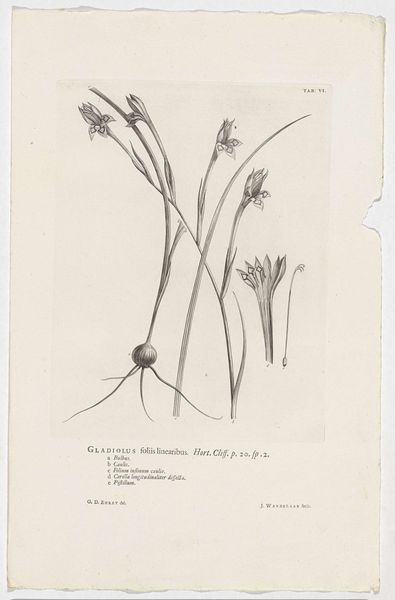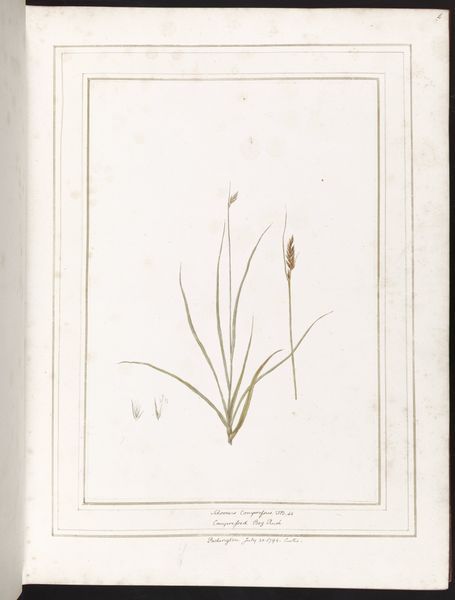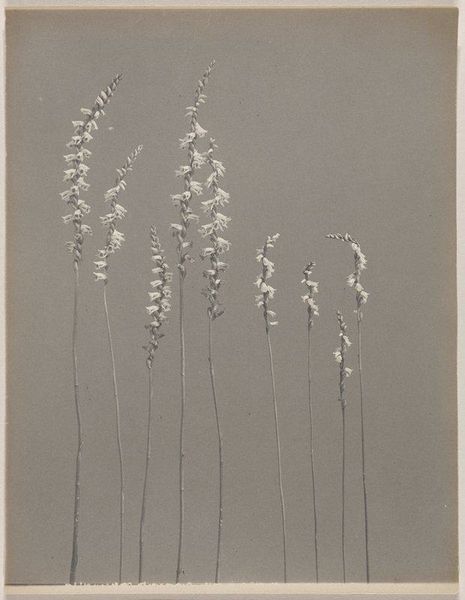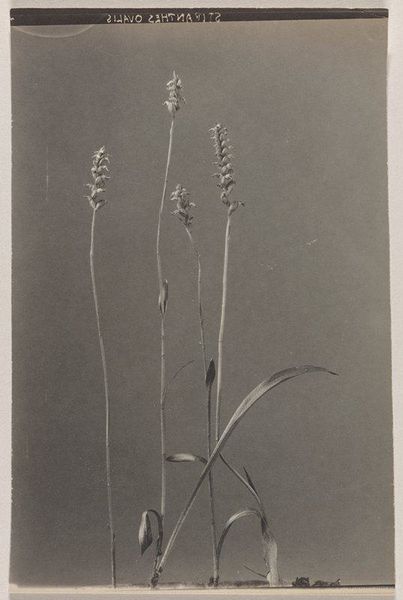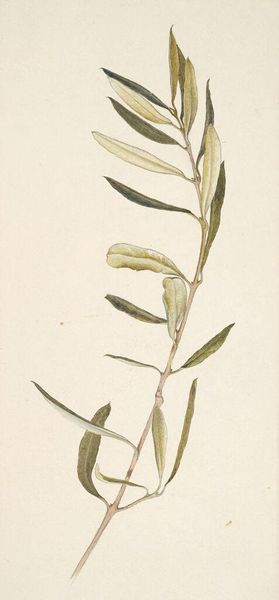
drawing, plein-air, watercolor
#
drawing
#
plein-air
#
landscape
#
botanical illustration
#
watercolor
#
botanical drawing
#
line
#
watercolour illustration
#
botanical art
#
realism
Dimensions: height 327 mm, width 203 mm
Copyright: Rijks Museum: Open Domain
Editor: This watercolor drawing, called "Ixia," is attributed to Cornelis van Noorde and was made sometime between 1741 and 1795. It's currently held at the Rijksmuseum. The flowers have such a delicate and realistic quality. What strikes you when you look at this work? Curator: Considering it's a botanical drawing, let's think about the context of its creation. Was this meant to be a scientific record? A decorative piece? Or was there some economic incentive tied to the flower itself, perhaps its cultivation and sale? Who had the resources to commission or create such detailed work, and what does that say about the social value placed on both art and the natural world at that time? Editor: That's a perspective I hadn't considered. I was focused on the aesthetics and skill involved in the drawing itself. Are you saying that the *purpose* of the drawing informs how we understand it? Curator: Precisely! Think about the pigments used. Where did van Noorde source them? Were they local or imported? Was there labor involved in preparing them? Understanding the material process gives us insights into the global trade networks of the 18th century, as well as the artist's access to resources. It moves beyond just appreciation, towards analysis. Editor: So, it's not just about *what* is depicted, but *how* and *why* it was made? That makes a lot of sense. I guess I tend to focus too much on the artistic skill and not enough on the socio-economic context. Curator: Indeed. This drawing can be seen as the end product of a process encompassing labor, resource extraction, and even social power structures. Looking at it through this lens helps us understand art not as isolated aesthetic objects, but as tangible outputs deeply enmeshed in their time. Editor: This is such a different way to look at art than what I’m used to. Thanks for broadening my perspective.
Comments
No comments
Be the first to comment and join the conversation on the ultimate creative platform.
